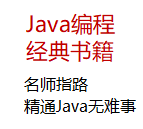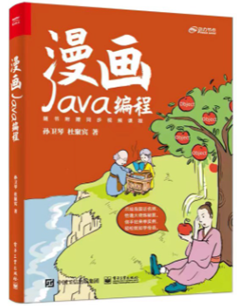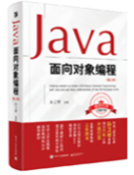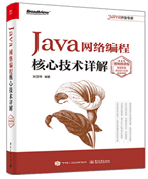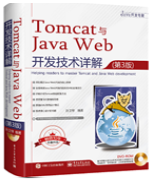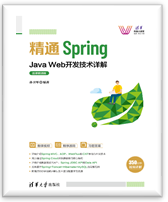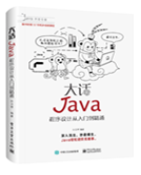|
|
1. 反射 使用了缺省的方式进行copy。要求源对象和目标对象必须实现getter和setter。进行copy时,内部会缓存缺省对象,以优化性能。
源码位置:
| org.springframework.beans.BeanUtils |
public class TestJavaUtils {
public static void main(String[] args) {
UserPo userPo=new UserPo();
userPo.setId(1001L);
userPo.setName("tom");
userPo.setAge(12);
UserDto userDto=new UserDto();
//源对象:目标对象
BeanUtils.copyProperties(userPo,userDto);
System.out.println(userDto);
}
@Data
public static class UserDto{
private Long id;
private String name;
private Integer age;
private String sex;
}
@Data
public static class UserPo{
private Long id;
private String name;
private Integer age;
}
} |
2. cglib字节码 copy对象时,可以使用CGLib的BeanCopier(其原理是运行时动态生成了用于复制某个类的字节码),其性能比反射框架org.springframework.beans.BeanUtils性能要高。
/**
* @param source 原始对象
* @param targetClass 拷贝的对象类型
*/
public static < T1,T2 > T2 createCopy(T1 source, Class < T2 > targetClass) {
if (source == null) {
throw new RuntimeException("参数异常");
} else {
T2 target;
try {
target = targetClass.newInstance();
} catch(Exception e) {
throw new RuntimeException(e);
}
BeanCopier beanCopier = BeanCopier.create(source.getClass(), targetClass, false);
beanCopier.copy(source, target, null);
return target;
}
} |
3. get和set的链式拷贝 本质是使用getter和setter的方式进行copy,但是借助了jdk8的链式编程。
| org.springframework.amqp.utils.JavaUtils |
源码位置(未引入rabbitMq可以粘贴代码到项目里面):
源码中使用如下方式进行copy的。
public final class JavaUtils {
/**
* The singleton instance of this utility class.
*/
public static final JavaUtils INSTANCE = new JavaUtils();
private JavaUtils() {
super();
}
/**
* Invoke {@link Consumer#accept(Object)} with the value if the condition is true.
* @param condition the condition.
* @param value the value.
* @param consumer the consumer.
* @param <T> the value type.
* @return this.
*/
public <T> JavaUtils acceptIfCondition(boolean condition, T value, Consumer<T> consumer) {
if (condition) {
consumer.accept(value);
}
return this;
}
/**
* Invoke {@link Consumer#accept(Object)} with the value if it is not null.
* @param value the value.
* @param consumer the consumer.
* @param <T> the value type.
* @return this.
*/
public <T> JavaUtils acceptIfNotNull(T value, Consumer<T> consumer) {
if (value != null) {
consumer.accept(value);
}
return this;
}
/**
* Invoke {@link Consumer#accept(Object)} with the value if it is not null or empty.
* @param value the value.
* @param consumer the consumer.
* @return this.
*/
public JavaUtils acceptIfHasText(String value, Consumer<String> consumer) {
if (StringUtils.hasText(value)) {
consumer.accept(value);
}
return this;
}
/**
* Invoke {@link BiConsumer#accept(Object, Object)} with the arguments if the
* condition is true.
* @param condition the condition.
* @param t1 the first consumer argument
* @param t2 the second consumer argument
* @param consumer the consumer.
* @param <T1> the first argument type.
* @param <T2> the second argument type.
* @return this.
*/
public <T1, T2> JavaUtils acceptIfCondition(boolean condition, T1 t1, T2 t2, BiConsumer<T1, T2> consumer) {
if (condition) {
consumer.accept(t1, t2);
}
return this;
}
/**
* Invoke {@link BiConsumer#accept(Object, Object)} with the arguments if the t2
* argument is not null.
* @param t1 the first argument
* @param t2 the second consumer argument
* @param consumer the consumer.
* @param <T1> the first argument type.
* @param <T2> the second argument type.
* @return this.
*/
public <T1, T2> JavaUtils acceptIfNotNull(T1 t1, T2 t2, BiConsumer<T1, T2> consumer) {
if (t2 != null) {
consumer.accept(t1, t2);
}
return this;
}
/**
* Invoke {@link BiConsumer#accept(Object, Object)} with the arguments if the value
* argument is not null or empty.
* @param t1 the first consumer argument.
* @param value the second consumer argument
* @param <T> the first argument type.
* @param consumer the consumer.
* @return this.
*/
public <T> JavaUtils acceptIfHasText(T t1, String value, BiConsumer<T, String> consumer) {
if (StringUtils.hasText(value)) {
consumer.accept(t1, value);
}
return this;
}
} |
测试用例:
public class TestJavaUtils {
/**
* 对象的copy链式。
*/
public static void main(String[] args) {
UserPo userPo=new UserPo();
userPo.setId(1001L);
userPo.setName("tom");
userPo.setAge(12);
UserDto userDto=new UserDto();
JavaUtils.INSTANCE.acceptIfNotNull(userPo.getAge(),userDto::setAge).acceptIfNotNull(userPo.getName(),userDto::setName);
System.out.println(userDto);
}
@Data
public static class UserDto{
private Long id;
private String name;
private Integer age;
private String sex;
}
@Data
public static class UserPo{
private Long id;
private String name;
private Integer age;
}
} |
----------------------------
原文链接:https://www.jianshu.com/p/64d37f6e6603
程序猿的技术大观园:www.javathinker.net
[这个贴子最后由 flybird 在 2020-11-24 21:44:18 重新编辑]
|
|

